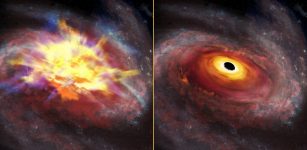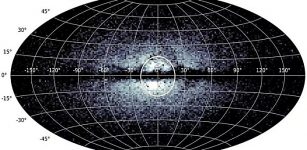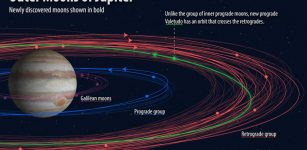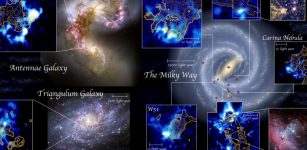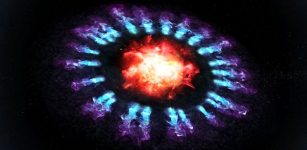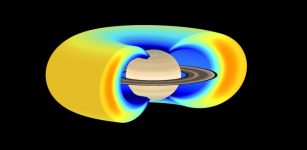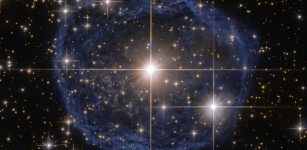Dense, Gaseous, ‘Sub-Neptune’ Alien World Three Times The Size Of Earth – Discovered
MessageToEagle.com – TESS (NASA’s Transiting Exoplanet Survey Satellite) has discovered a third small planet outside our solar system.
The new planet, named HD 21749b, orbits a bright, nearby dwarf star about 53 light years away, in the constellation Reticulum, and appears to have the longest orbital period of the three planets so far identified by TESS.
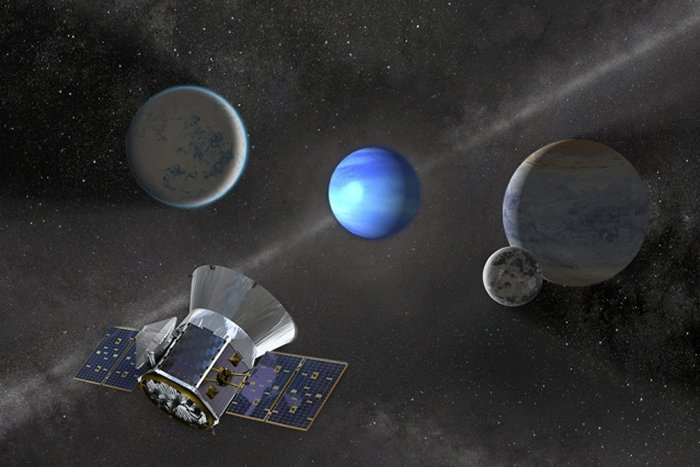
HD 21749b journeys around its star in a relatively leisurely 36 days, compared to the two other planets — Pi Mensae b, a “super-Earth” with a 6.3-day orbit, and LHS 3844b, a rocky world that speeds around its star in just 11 hours. All three planets were discovered in the first three months of TESS observations.
The surface of the new planet is likely around 300 degrees Fahrenheit — relatively cool, given its proximity to its star, which is almost as bright as the sun.
“It’s the coolest small planet that we know of around a star this bright,” Diana Dragomir, a postdoc in MIT’s Kavli Institute for Astrophysics and Space Research, who led the new discovery, said in a press release.
“We know a lot about atmospheres of hot planets, but because it’s very hard to find small planets that orbit farther from their stars, and are therefore cooler, we haven’t been able to learn much about these smaller, cooler planets. But here we were lucky, and caught this one, and can now study it in more detail.”
The planet is about three times the size of Earth, which puts it in the category of a “sub-Neptune.” Surprisingly, it is also a whopping 23 times as massive as Earth. But it is unlikely that the planet is rocky and therefore habitable; it’s more likely made of gas, of a kind that is much more dense than the atmospheres of either Neptune or Uranus.
“We think this planet wouldn’t be as gaseous as Neptune or Uranus, which are mostly hydrogen and really puffy,” Dragomir says. “The planet likely has a density of water, or a thick atmosphere.”
Researchers have also detected evidence of a second planet, though not yet confirmed, in the same planetary system, with a shorter, 7.8-day orbit. If it is confirmed as a planet, it could be the first Earth-sized planet discovered by TESS.
Since it launched in April 2018, TESS, an MIT-led mission, has been monitoring the sky, sector by sector, for momentary dips in the light of about 200,000 nearby stars. Such dips likely represent a planet passing in front of that star.
Over its two-year mission, TESS will survey nearly the entire sky by monitoring and piecing together overlapping slices of the night sky. The satellite will spend the first year surveying the sky in the Southern Hemisphere, before swiveling around to take in the Northern Hemisphere sky.
When the researchers looked through the HARPS data, they discovered a repeating signal emanating from HD 21749 every 36 days. From this, they estimated that, if they indeed had seen a transit in the TESS data from sector 1, then another transit should appear 36 days later, in data from sector 3. When that data became publicly available, a momentary glitch created a gap in the data just at the time when Dragomir expected the second transit to occur.
“Because there was an interruption in data around that time, we initially didn’t see a second transit, and were pretty disappointed,” Dragomir recalls. “But we re-extracted the data and zoomed in to look more carefully, and found what looked like the end of a transit.”
The pattern was compared to the first full transit they had originally discovered, and found a near perfect match — an indication that the planet passed again in front of its star, in a 36-day orbit.
Researchers also used data from the Planet Finder Spectrograph, an instrument installed on the Magellan Telescope in Chile.
MessageToEagle.com

